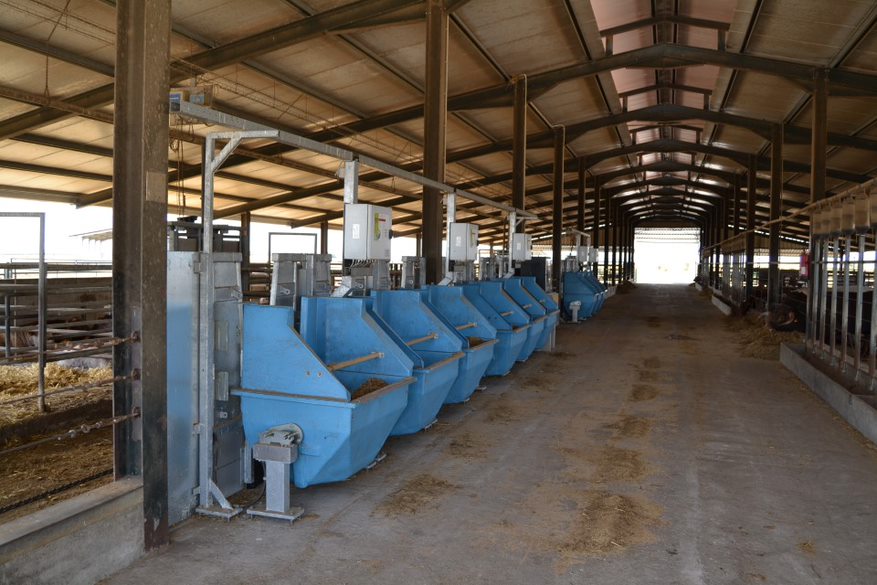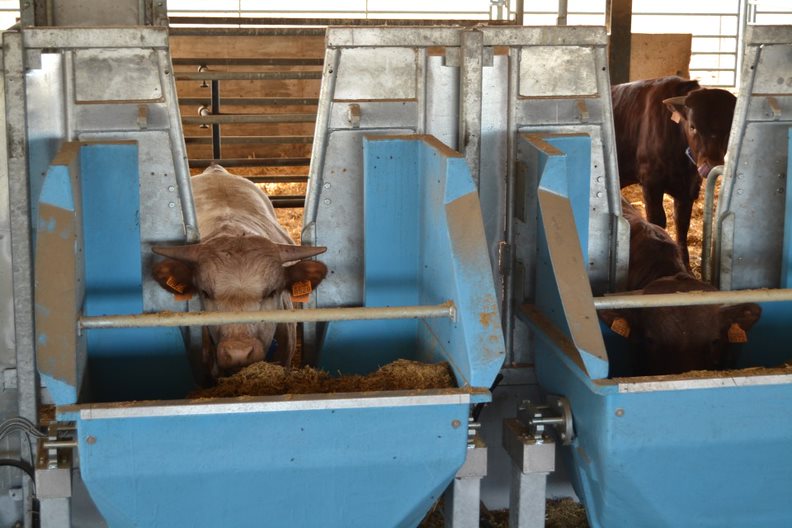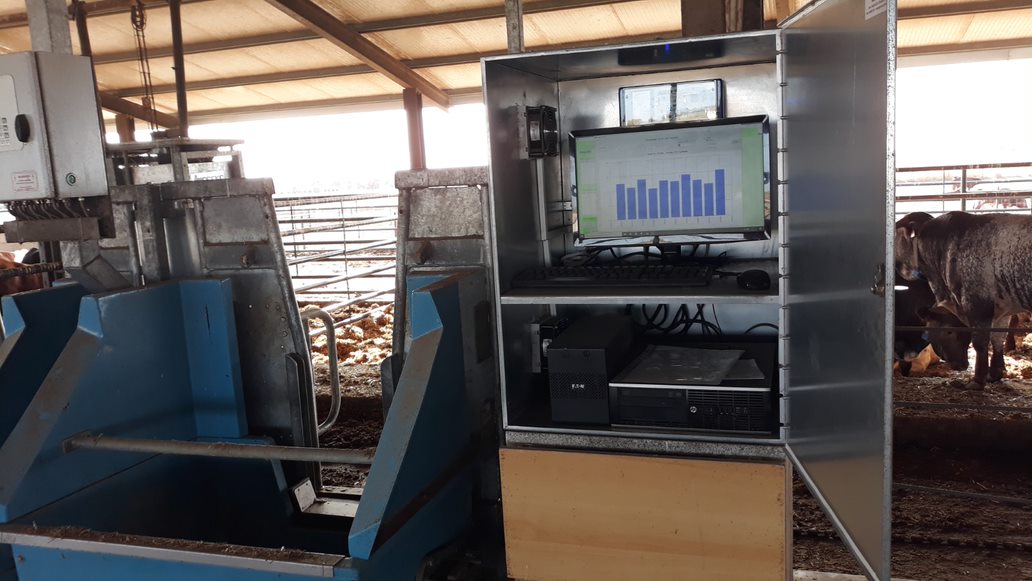A common challenge for beef cattle farmers is the high production costs, which could be minimised by improving feed efficiency; this would also minimise the environmental impact of beef production. That is why the association of Mertolengos Bovine Breeders (Associação de Criadores de Bovinos Mertolengos) in Portugal installed nine units of the Roughage Intake Control (RIC) system from Hokofarm Group (the Netherlands) in their Performance Testing Station, aiming to automatically collect individual data for feed intake. The data they gathered supports the selection of future breeding bulls and thus to genetically improve the efficiency of the Mertolenga population. Therefore, this innovation is related to three BovINE themes: Socioeconomic Resilience by reducing feeding costs and Production Efficiency and Meat Quality and Environmental Sustainability by improving feed efficiency.
 | |
 |  |
On the H. dos Currais e Simalhas farm, where this good practice takes place, nine RIC feeding units are divided among three groups of animals, with the capacity to serve 45–50 animals simultaneously. The feeding system management uses one horizontal unifeed mixer; the automatic feeding trough is filled daily (as shown in the photo) with the desired nutritional feed profile, as specified by the technical support. All animals are identified electronically with a collar and each trough has an antenna and scales. When an animal enters the trough or steps out after eating, the system registers the date and time (hh:mm:ss) as well as the weight of the feed eaten. The software exports a data file with the feed intake of each young bull daily. All animals are also manually weighed every three weeks with an electronic scale from Iconix. The residual feed intake (RFI) is then calculated and considered as a trait in the selection of the breed, performed by a genetic expert from the National Institute for Agrarian and Veterinary Research (INIAV) in Portugal.
Located in São Manços, about 14 km from Évora, this farm is where young Mertolenga bulls are tested over a 120-day period according to an established protocol, and where some weaned animals are finished under an intensive system for sale as Mertolenga Protected Designation of Origin (PDO) meat through the producer’s association, Promert SA. The farm houses around 300 young males (about 10% are females) and has about 23 ha, of which 15 ha are allocated for the production of hay and silage.
The Roughage Intake Control (RIC) system on this farm has been in operation since July 2018. At the moment, the farm has two groups being tested – on with 25 young Mertolenga bulls and another with 12 young Aberdeen-Angus bulls – by an established procedure of collaboration between the two farmers’ associations. Despite the small volume of data, there is variability in residual feed intake, so there is room for selection to improve the breed.
Part of the equipment cost was financed through a national project called ‘Go BovMais’ (operational group). It took about two years from submitting the application for the project to installing the equipment on the farm. The main challenges and bottlenecks in the implementation process were bureaucratic delays getting the project approved and acquiring the budget to purchase the equipment. However, the resilience and persistence paid off thanks to the benefits derived from the technology.
There are three lessons learnt that could be relevant for other practitioners who want to implement this good practice:
- The differences in feed intake values between animals may be greater than expected.
- A young bull with a good growth rate after weaning (average daily gain) may not be the most efficient.
- The differences in individual RFI values can be an important factor in production costs and environmental impact.
Source of information:
- Interview with a farmer by the BovINE Network Manager from Portugal: José M. Montes Pais (pais@mertolenga.com)
Further information:
- Webinar from the company that provides the Roughage Intake Control system (new version – RIC2discover): https://youtu.be/fq5c8diUieI
- Website of the company: https://hokofarmgroup.com/
- Website of ACBM - Associação de Criadores de Bovinos Mertolengos : http://www.mertolenga.com/
- Go BovMais: https://ec.europa.eu/eip/agriculture/en/find-connect/projects/go-bovmais-melhoria-da-produtividade-da-fileira
